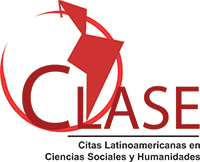LA EXPORTACIÓN DE CRUDO EN MÉXICO Y LA PRODUCTIVIDAD TOTAL DE FACTORES: UN ANÁLISIS DE LA RELACIÓN DE CAUSALIDAD (1993-2009)
Resumen
En este trabajo se estudia la dirección de la relación de causalidad entre las exportaciones de crudo en México y la productividad de Pemex Exploración y Producción durante el periodo 1993-2009, utilizando la prueba de causalidad de Granger, así como la prueba de causalidad de Toda y Yamamoto. Los resultados indican una relación de causalidad unidireccional que va de la productividad total de los factores a las exportaciones de crudo, lo cual concuerda con la idea de que únicamente las firmas productivas serán capaces de exportar. Las pruebas aplicadas corroboran que fueron necesarias las mejoras en la productividad a fin de lograr mayores exportaciones de crudo en México; esta relación se da considerando que una empresa disminuye sus costos de producción al elevar su productividad, lo que hace que ésta sea más competitiva a nivel mundial.
Descargas
Citas
Appleyard, D. R. y Field A. J. (2003), Economía Internacional, Cuarta Edición, Mc. Graw Hill, España.
Barro, R. y Sala-i-Martin, X. (1995). Economic Growth, McGraw-Hill, E.U.A.
Bernard, A. B. y Jensen, J. B. (1999). “Exporting and Productivity”, National Bureau of Economic Research, 7135, 1-27.
Bernard, A. B., Eaton, J., Jensen, J. B., y Kortum, S. S, (2003). “Plants and Productivity in International Trade”, American Economic Review, 93 (4), 1268-1290.
Bhagwati, J. (2002). Free Trade Today, Princeton University Press, New Jersey.
_____ (2004). In Defense of Globalization, Oxford University Press, New York.
Carolan, T., Singh, N. and Talati, C. (1998). “The Composition of U.S.-East Asia Trade and Changing Comparative Advantage”, Journal of Development Economics, 57 (2), 361-389.
De Loecker, J. (2007). “Do Exports Generate Higher Productivity? Evidence from Slovenia”, Journal of International Economics, 73 (1), 69-98.
Delgado, M., Fariñas, J. y Ruano, S. (2002). “Firm Productivity and Export Markets: A Non-Parametric Approach”, Journal of International Economics, 57 (2), 397-422.
Dickey, D.A. y W.A. Fuller (1979). “Distribution of the Estimators for Autoregressive Time Series with a Unit Root”, Journal of the American Statistical Association”, 74, 427-431.
_____ (1981). “Likelihood Ratio Tests for Autoregressive Time Series with a Unit Root”, Econometrica, 49, 1057-1072.
Fadinger, H. y Fleiss, P. (2007). “Trade and Sectorial Productivity”, Alemania, en: www.iadb.org/intal/aplicaciones/uploads/ponencias/i_foro_ ELSNIT_2007_10_02_Harald_Fadinger.PDF.
Fariñas, J. y Ruano, S. (1999). “Eficiencia empresarial y actividad exportadora”, Papeles de Economía Española, (78/79), 220-235.
Geweke, J., R. Meese y W. Dent (1982). “Comparing Alternatives Tests of Causality in Temporal Systems”, Journal of Econometrics, 21, 161- 194.
Gómez, M. (2011). Tres ensayos sobre el tipo de cambio en México, Tesis de Doctorado en Economía, Facultad de Economía, UNAM, México.
Granger, C. W. J. (1969). “Investigating Causal Relations by Econometrics Models and Cross Spectral Methods”, Econometrica, 37, 424-438.
Granger, C. y P. Newbold (1974). “Spurious Regressions in Econometrics”, Journal of Econometrics, 2, 111-120.
Grossman, G., y Helpman, E. (1991). Innovation and Growth in the Global Economy, MIT Press, Massachusetts.
Gujarati, D. (2003). Econometría, Cuarta Edición, Mc. Graw-Hill, México.
Hamilton, J. (1994). Time Series Analysis, Princeton University Press, E.U.A.
Hernández Laos, E. (1985). La Productividad y el Desarrollo Industrial en México, Fondo de Cultura Económica, México.
_____ (2002). “La Productividad en México. Origen y Distribución, 1960- 2002”, ECONOMÍAUNAM, 2 (5), 7-22.
_____ (2004). “Convergencias y Divergencias entre las Economías de México y Estados Unidos en el Siglo XX”, Investigación Económica, 63 (250), 87-129.
Hernández, E. y Guzmán, A. (2005). “¿Convergencia o Divergencia en Productividad Industrial? Acumulación frente a Asimilación en México y Estados Unidos, México”, Economía, Teoría y Práctica, 22, 3-42.
Hidalgo, A. (2000). El cambio estructural del sistema socioeconómico costarricense desde una perspectiva compleja y evolutiva (1980- 1998), Tesis Doctoral, Universidad de Huelva, Costa Rica.
INEGI (2011). Banco de Información Económica, México, en: http://dgcnesyp. inegi.org.mx/cgi-win/bdieintsi.exe.
Kaldor, N. (1967). Strategic Factors in Economic Development, Cornell University Press, New York.
Kankesu, J. (2004). “The Impact of Trade Liberalisation on Manufacturing Sector Performance in Developing Countries: A Survey of the Literature”, Thammasat Economic Journal, 22 (2), 115-121.
Lee, J. y M. Strazicich (2001). “Break Point Estimation and Spurious Rejections with Endogenous Unit Root tests”, Oxford Bulletin of Economics and Statistics, 63, 535-558.
_____ (2003). “Minimum Lagrange Multiplier Unit Root Test with Two Structural Breaks”, Review of Economics and Statistics, 85, 1082- 1089.
_____ (2004). “Minimum LM Unit Root Test with One Structural Breaks”, Manuscript, Department of Economics, Appalachian State University, 1-16.
Lee, Y. S. (1986). “Changing Export Patterns in Korea, Taiwan and Japan”, Weltwirtschaftliches Archiv, 122 (1), 150-163.
Li, K. W. y Bender, S. (2007). “Productivity and Manufacture Export Causality Among World Regions: 1989-1999”, The International Trade Journal, 21 (2), 121-125.
Machuca Domínguez, J. et al. (1995). Dirección de Operaciones, McGraw- Hill, España.
Medina, E. J. (2001). “Is the Export-led Growth Hypothesis valid for Developing Countries? A Case Study of Costa Rica”, Policy Issues in International Trade and Commodities Series, 7, 2-13.
Melitz, M. J. (2003). “The Impact of Trade on Intra-Industry Reallocations and Aggregate Industry Productivity”, Econometrica, 71 (6), 1695- 1725.
Nelson, C. R., y C. I. Plosser (1982). “Trends and Random Walks in Macroeconomic Time Series: Some Evidence and Implications”, Journal of Monetary Economics, 2, 139-162.
Perron, P. (1989). “The Great Crash, the Oil Price Shock, and the Unit Root Hypothesis”, Econometrica, 57 (6), 1361-1401.
_____ (1997). “Further Evidence on Breaking Trend Functions in Macroeconomic Variables“, Journal of Econometrics, 80 (2), 355-385.
Phillips, P. y Perron, P. (1988). “Testing for a Unit Root in a Time Series Regression”, Biometrica, 75 (2), 335-346.
Pemex (2009). Anuario Estadístico, México, en: http://www.ri.pemex.com/ index.cfm?action=content§ionID=134&catID=12202.
Ramírez, N. y Aquino, J. (2004). Crisis de Inflación y Productividad Total de los Factores en Latinoamérica, Documento de Trabajo, Perú.
Rana, P. (1990). “Shifting Comparative Advantage among Asian and Pacific Countries”, The International Trade Journal, 4 (3), 243-258.
Roberts, M. y Tybout, J. (1997). What Makes Exports Boom?, The World Bank ,Washington D.C.
Secretaría de Energía (2011). Sistema de Información Energética, México, en: http://sie.energia.gob.mx/sie/bdiController?action=login
Sim, C. A. (1972). “Money, Income and Causality”, American Economic Review, 62 (4), 540-552.
Toda, H.Y. y Yamamoto (1995). “Statistical inference in Vector Autoregressions with Possibly Integrated Processes”, Journal of Econometrics, 66, 225-250.
Vergara, R. y Rivero, R. (2006). “Productividad Sectorial en Chile: 1086- 2001”, Cuadernos de Economía, 43 (127), 143-168.
Wagner, J. (2005). “Exports and Productivity: A Survey of the Evidence from Firm Level Data”, The Economy, 4, 1-3.
Zivot, E. y D. Andrews (1992). “Further Evidence on the Great Crash, the Oil Price Shock, and the Unit Root Hypothesis”, Journal of Business and Economic Statistics, 10 (3), 251-270.

Esta obra está bajo licencia internacional Creative Commons Reconocimiento-NoComercial-CompartirIgual 4.0.














